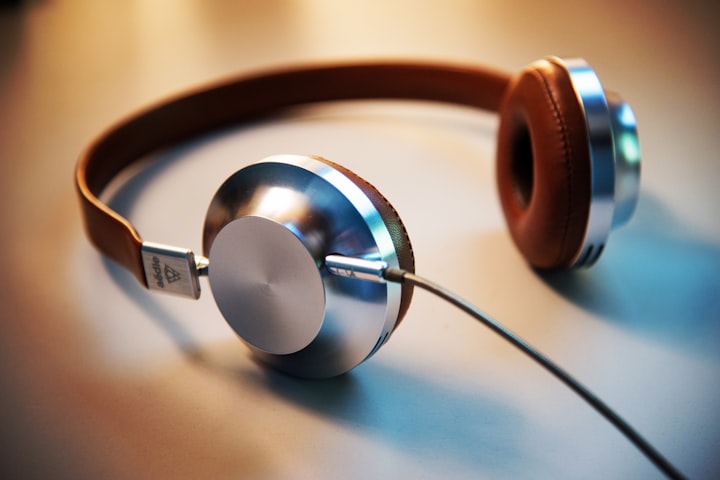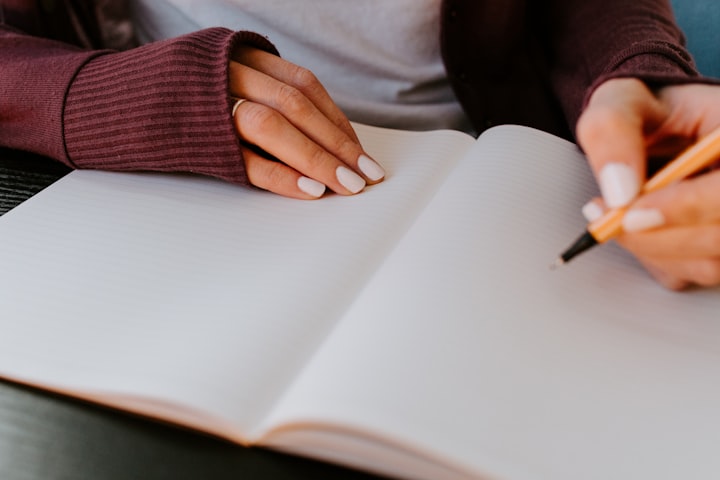Stressed? Can't sleep or concentrate? Are binaural beats the answer?
Tap into the amazing power of your mind.

I'm increasingly aware that my stressed and distracted mind is causing me not to be as productive as I might be. Frequently I struggle to focus, have restless sleep, and my subconscious sabotages the conscious efforts at progress and clarity that I'm trying to make. I was looking for a solution, one that could fit easily into my routine.
I listen to music when I'm writing and focusing. Some nights I listen to meditation music to help me sleep. When I read about binaural beats, it was something I had to try.
What are binaural beats?
Binaural simply means 'twin audio'. Two different tones are played, one in each ear, at slightly differing frequencies. You might get a tone at 200Hz, for example, in the left ear, and a tone at 205Hz in the right ear.
The brain makes an effort to sync these up, which creates an auditory illusion of a beat, which sounds like an audio throb, at 5Hz, or the difference between the two frequencies. This is the healing effect of the binaural beats, and it is totally produced by the brain.
If you listen to a binaural beats track, you can experience the audio illusion by listening on headphones, one track in each ear. To prove to yourself that the throb, or the pulse that you hear in-between the two tones is purely generated by your brain, try removing one ear bud, then the other. Each time the sound will resolve itself to a single tone, without the rhythmic pulse.
What is the background to binaural beats?
Binaural beats were discovered in their present form by the Prussian physicist Heinrich Wilhelm Dove in 1839. He attached two tuning forks on slightly different frequencies to ear funnels, located them on either side of a room, and placed the patient in the middle. At the time it was the frontier of modern brain science. Certainly the ability to programme the music and measure the waves precisely is easier in an era of computer music.
However, binaural beats, says Melinda Maxfield, PhD, Stanford University, have been used by ancient societies in drumming rituals and rhythms that stimulate the brain on specific frequencies. Her research on the drumbeats used during rituals of ancient cultures found that they generally beat at a steady rate of 4.5 beats per second, to induce a trance-like state of brainwaves at the Theta frequency. More about frequencies below.
How to use binaural beats
When I first started listening to binaural beats after reading an article on improving focus, I simply looked them up on Spotify. There were some helpful playlists there - focus, mediation, sleep and others. I was in my writer's room, I didn't want to think of the creative writing I was about to do as work, so I played a track for stress relief. Immediately I could tell it was wrong. It was too deep a tone. I played another, for meditation, again it was wrong. The focus one was the right tone, Goldilocks like, it was not too deep, not too high. I relaxed straight into my work and was impressed with my level of productivity.
Since then I've done further research. brain.fm produces music based on binaural beats and I would recommend trying out their product, which they call 'functional music', if you want a targeted result. It is true that different tones perform different functions.
- Gamma waves - at a frequency of 30–100 Hz - are associated with high level information processing and cognitive enhancement
- Beta waves - between 14–30 Hz - induce focused attention on external stimuli, and analytical thinking.
- Alpha waves - when the brain produces a frequency of 8–14 Hz - are widely used therapeutically for relaxed flow states, focused attention and accelerated learning
- Theta waves - a narrow band of frequencies between 4–8 Hz - are associated with REM sleep, deep relaxation, creativity and meditation
- Delta waves - the lowest frequencies, 0.1–4Hz - are associated with pain relief, deep sleep, access to the unconscious mind, anti ageing and bodily healing.
Each range contains a variety of effects, and these vary to an extent by individual. Certainly different effects can be found within the high, low or mid sections of the wave bands.
Beats for productivity
Theta waves I regularly find the most beneficial. They are the perfect combination of light relaxation and focus, and create a state of productive flow. Once plugged into that state, I'm reluctant to leave it, so I continue to work and perform at a peak.
On the brain.fm productivity music, I worked continuously for a two hour stretch and was able to fill in a tricky application form that I'd been putting off because it didn't save mid completion. It felt easy to continue with it and to answer to the best of my ability using the track. The experience was highly satisfying.
Beats for subconscious healing
I've also been using binaural beats for is a longer term project, to sync up my subconscious and conscious mind to prevent self sabotage. The changes I need to see are in the area of my self perception. It's early days and hard to say yet what the longer term effects of listening to the tracks maybe, but certainly I'm becoming aware of areas where I am vulnerable and would benefit from healing. Listening recently has helped me to be a wise guardian of my wounds and vulnerabilities. I hope further experiments with consciously imagining healing as I listen will help me to continue to tend to that subconscious part of my mind. So far, it looks promising.
Beats for sleep
Finally, sleep. Some interesting experiments have been done here on binaural beats to prove that they help with deep restful sleep. Frontiers in Science reports an experiment looking at participants over three nights, with an adaptation night to familiarise to the new environment, an experiment night, and a follow up night. The results from the lab are impressive, suggesting that the brainwaves of deep healing sleep are more readily activated listening to delta binaural beats, and that this leads to more brain refreshment over night.
My own experience is that binaural beats for sleep may work in a controlled environment, but are harder to administer at home in a way that doesn't disturb sleep. Headphones aren't easy to sleep in, laptop or phone can end up casting light when brushed, even when it is set to dark mode, accustoming to sound at night can be tricky. On nights when I've listened while going to sleep, the unfamiliarity has kept me awake. On subsequent nights, I have then missed the sound of the beat and found that my sleep is disturbed as a consequence.
The best compromise that I've come to is to do a meditation using binaural beats before sleep, sinking from theta to delta waves, and then to turn out the light.
Conclusion
However you use binaural beats, they are a useful tool for brain refreshment and entrainment. They are convenient and easy to access. They're a fast track to optimal brainstates. However, the most important thing to remember is that they are only a tool. In fact the most powerful piece of biotechnology in the whole experience is your brain itself which produces the beat.
Binaural beats simply tap into that power.
The power of that incredible piece of kit between your ears, whether you are tired, stressed, or struggling with concentration.
Look after it.






Comments
There are no comments for this story
Be the first to respond and start the conversation.